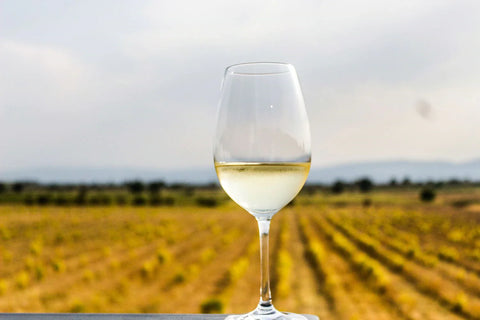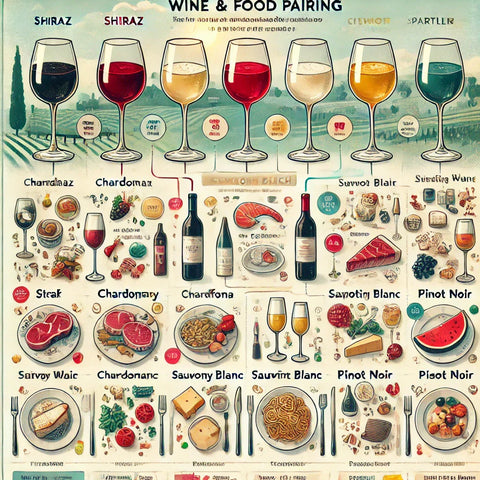Wine Types: A Complete Australian Guide to Styles and Varieties
Understanding wine types helps you make informed choices and enhances your appreciation of different styles. From the robust reds of the Barossa to the crisp whites of the Adelaide Hills, Australia produces an impressive range of wine styles that showcase our diverse wine regions and winemaking expertise.
Major Wine Categories
Still Wines
Still wines form the backbone of Australian wine production, representing our most significant wine category. These wines contain no carbonation and showcase the pure expression of grape varieties and regional character.
Red Wines: These wines gain their character through fermentation with grape skins and seeds. Australian red wines range from light, elegant Pinot Noirs from Tasmania to powerful Barossa Shiraz. The winemaking process extracts colour, tannins, and flavour compounds that create complexity and structure in the finished wine.
White Wines: Australian white wines demonstrate remarkable diversity, from crisp Clare Valley Rieslings to complex Margaret River Chardonnays. Typically produced without skin contact, these wines focus on freshness, acidity, and pure fruit expression. Modern Australian white wines often balance fruit intensity with elegance and restraint.
Rosé Wines: A growing category in Australia, rosé has evolved from simple sweet styles to sophisticated dry wines. Made from red grapes with limited skin contact, modern Australian rosé often shows fresh berry flavours with crisp acidity. McLaren Vale and Provence-style rosés have particularly gained recognition for their quality and food-friendly nature.
Sparkling Wines
Australian sparkling wine production has evolved significantly, with regions like Tasmania now producing world-class traditional method sparklings that rival Champagne.
Traditional Method: Following the same process as Champagne, these premium Australian sparklings undergo secondary fermentation in bottle. This labour-intensive method creates fine bubbles and complex flavours developed through extended lees aging. Tasmanian examples particularly showcase the potential of this style in Australia.
Prosecco Style: The King Valley has become Australia's hub for Prosecco production, using tank fermentation to create fresh, fruit-driven sparkling wines. This more cost-effective method produces approachable, everyday sparkling wines that maintain consistent quality and style.
Pét-Nat: This ancient method of producing sparkling wine has seen a revival through Australia's natural wine movement. The wine is bottled before primary fermentation completes, creating a naturally sparkling wine that often shows cloudy appearance and unique flavour profiles.
Fortified Wines
Australia's fortified wine heritage remains an important part of our wine culture, particularly in regions like Rutherglen.
Tawny Style: Previously known as "Port," Australian tawny shows complex flavours developed through barrel aging in our warm climate. These wines blend multiple vintages to maintain house style and showcase concentrated flavours of dried fruits, nuts, and caramel.
Muscat: Rutherglen Muscat represents one of Australia's unique wine treasures. These complex, sweet wines develop remarkable intensity through barrel aging in warm conditions. The classification system from Classic to Rare helps consumers understand different quality levels.
Sweet and Dessert Wines
Australian dessert wines range from late harvest styles to complex botrytis-affected wines.
Late Harvest: These wines come from grapes left on the vine to develop higher sugar levels. Australian late harvest wines often show intense fruit sweetness balanced by natural acidity, particularly successful in cooler climate regions.
Noble Rot: Botrytis-affected wines represent some of Australia's most complex sweet wines. Regions like the Riverina have become specialists in this style, producing internationally recognised dessert wines with remarkable concentration and complexity.
Alternative Styles
Modern Australian winemaking continues to evolve, embracing new styles and approaches.
Orange/Amber Wines: This traditional style of making white wines with skin contact has seen renewed interest. Australian producers are creating textural, complex wines that challenge conventional white wine expectations and offer exciting food matching possibilities.
Low/No Alcohol: Responding to changing consumer preferences, Australian producers are developing sophisticated low and no-alcohol wines using advanced technology while maintaining wine character and flavour.
Understanding these diverse wine types enhances appreciation of Australia's rich wine culture and helps inform choices for different occasions. Whether exploring traditional styles or discovering modern innovations, Australian wine types offer something for every palate and preference.
Would you like me to continue with another article focusing on a different high-traffic wine keyword?




Comments (0)
There are no comments for this article. Be the first one to leave a message!